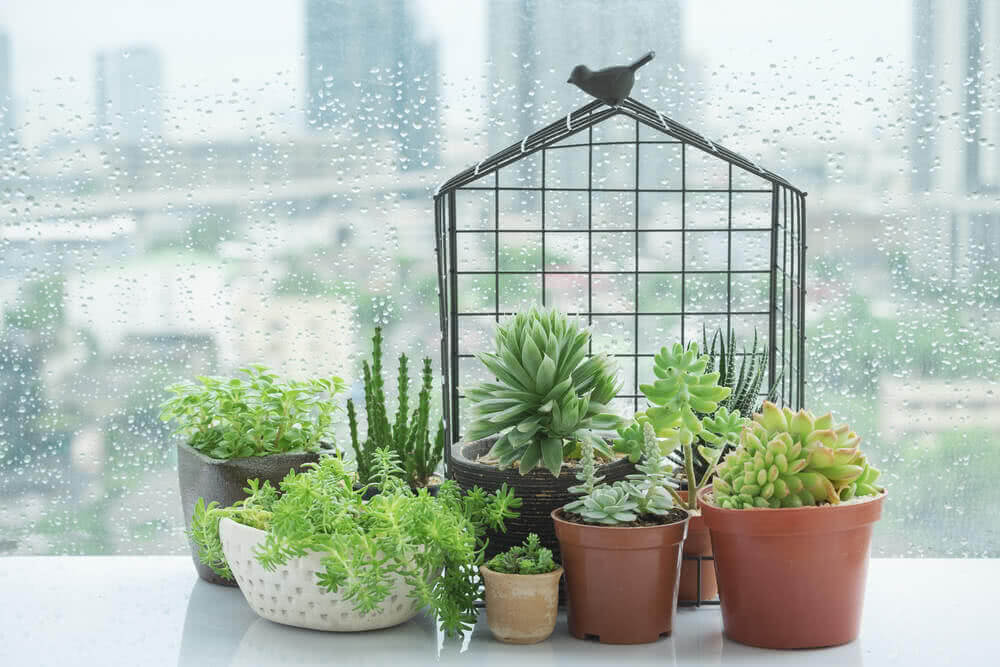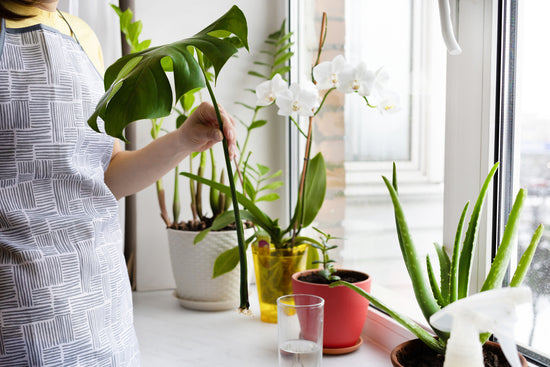Succulents come in many different shapes, colours and sizes. There are trailers, thick ones, and stemless rosettes, with plants in shades of grey, green, blue, purple, bronze and near black, with some that are attractively variegated. Leaves can be smooth, hairy or armed with dangerous thorns. Among the most common types are aloe, agave, aeonium, crassula, echeveria, haworthia, sempervivum, pachyphytum and sedum.
For something more unusual try adromischus with its thick, wavy leaves covered in brown spots, or living stones – low growing plants that mimic the shape and colour of pebbles. If your local plant centre doesn’t stock what you’re looking for, then check out Ugaoo.com and buy succulents online. Succulents thrive in gritty, soil-based compost. The little green beauties look stunning by a windowsill when planted in terracotta pots or metallic containers.

Alternatively, put different succulents together in a bowl-shaped container. Finish it off by topdressing with a decorative gravel mulch. Looking after them is a doddle. Succulents need watering whenever the compost completely dries out - every couple of weeks in summer, less so in winter. If in doubt, it’s better to underwater than give them too much.
In this blog, let’s look at six super succulents for Windowsill. These easy-care succulents are perfect for newbie gardeners.
1. Adenium:
Native to the Canary Islands, these succulents are highly varied. Some make large multi-branched plants topped with rosettes; others produce single rosettes as flat as a pancake. A must-grow variety is Aeonium ‘Zwartkop’, with its dramatic black leaves. Buy Adenium plant online.
2. Aloe:
This tribe boasts some spiny-leaved monsters among its ranks. Best indoors are dwarf, smooth-leaved ones, such as partridge-breasted aloe (Aloe variegata) with its rosettes of green leaves that are adorned with white bands. Buy aloevera , aloevera green mini
3. Crassula:
There’s no typical foliage or growth habit to tell crassulas apart. Rattail plant (Crassula muscosa) produces clumps of stems clothed in tiny leaves, while Crassula falcata has large, propeller-shaped blades. Best known is Crassula ovata or money tree.
4. Echeveria:
These succulents form either flattened, stemless rosettes with waxy-coated leaves, or grow as shrubby plants topped with rosettes. Typically they have grey or pale green foliage and produce stalks carrying showy red or yellow flowers in summer. Buy Echeveria spender, Echeveria black prince, Echeveria Elegans online.
5. Haworthia:
These mainly form stemless, compact rosettes with slender tapering leaves. The zebra haworthia (Haworthia fasciata) is instantly recognizable thanks to its 4 in (10 cm) long green leaves that are marked with raised horizontal white bands. Buy haworthia retusa, haworthia attenuata, haworthia cooperi, haworthia grabata online.
6. Sedum:
Generally compact, sedums produce upright stems clad with round, fleshy leaves. Often shiny and flushed with red giving them the appearance of jelly beans. Donkey’s tail (Sedum morganianum) is different - its grey-green leaves cover 12in (30cm) long trailing stems. Buy Sedum golden online.
Source: Amateur Gardening, January 2016










